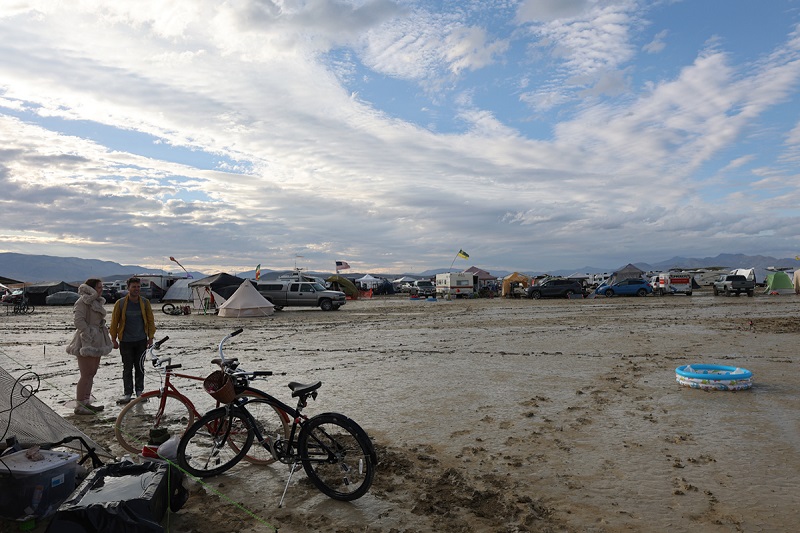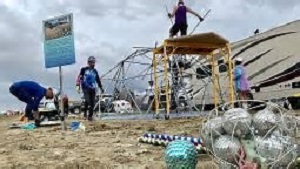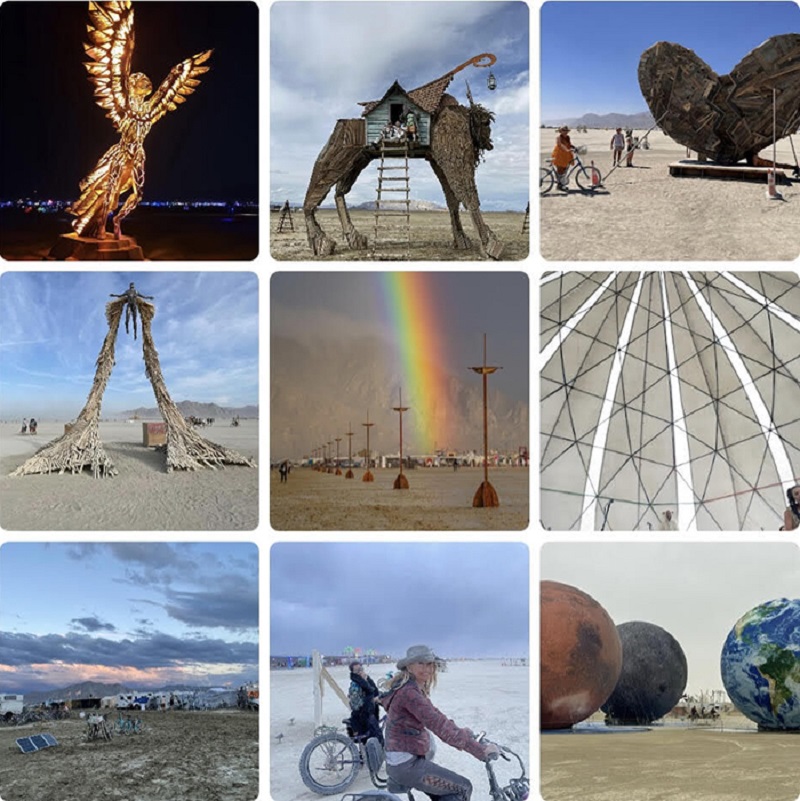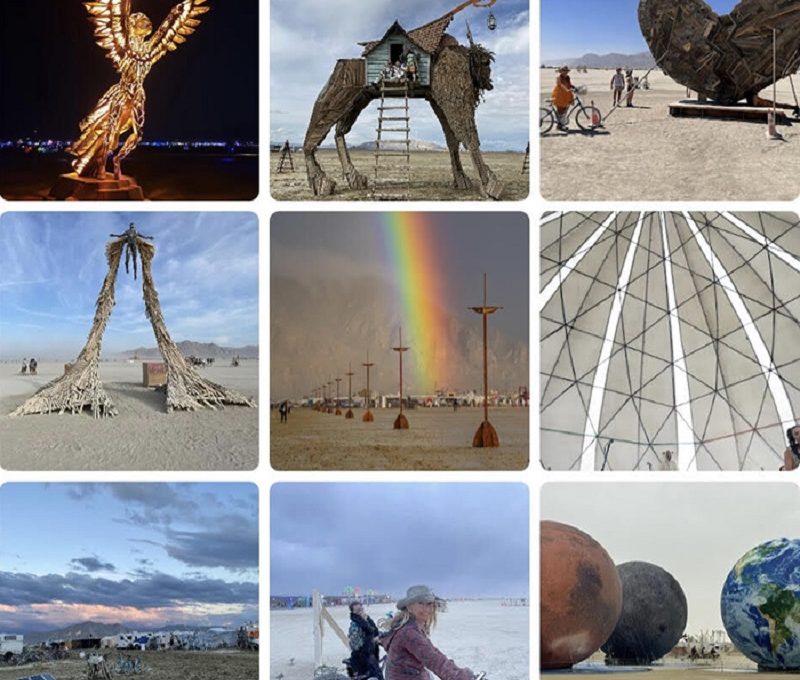EarthTalk®
From the Editors of E – The Environmental Magazine

The Burning Man festival is famous for its avant-garde art installations and performance art, but greens worry about its environmental impact. Credit: Ben Weinstein-Raun. FlickrCC
Dear EarthTalk: I’ve heard a lot about the Burning Man festival of late. Can you shed light on just how “green” or not-so-green this event really is? – B.L. Pepper, Seattle, WA
Burning Man, the annual arts and music festival held in the middle of Nevada’s Black Rock Desert, has garnered global attention for its avant-garde art, radical self-expression, and the temporary city it builds each year, called Black Rock City. However, when it comes to the festival’s environmental footprint, opinions are as diverse as the event’s attendees’ eclectic outfits.
One of the most substant biggest environmental impacts of Burning Man is transportation. Attendees trek from all corners of the globe to reach the remote desert location, and many do so via gas-guzzling vehicles, resulting in a significant carbon footprint. Some burners mitigate this impact by carpooling, arriving by bus or bicycle or participating in organizer-led ridesharing programs.
Building a temporary city for tens of thousands of people necessitates a considerable number of resources. Construction materials, generators, and fuel for transportation within Black Rock City are among the many necessities. While efforts have been made to reduce waste and reuse materials, the event’s construction process still takes a toll on the environment.

Burning Man preaches a “leave no trace” ethos, asking participants to pack out everything they bring in. Most attendees cooperate, but instances of litter and improper waste disposal do occur. The event provides recycling and composting options, but managing waste in such a remote location is a challenge.
Powering the numerous art installations, camps and events at Burning Man also uses substantial energy. Strides have been made to use solar and other renewable sources, but the event’s overall energy usage is significant. Some burners bring solar panels and promote sustainability within their camps.
A hallmark of Burning Man is its striking art installations, many of which are temporary and may not prioritize long-term sustainability. Some of these creations are burned during the festival’s climax, releasing emissions and creating waste.
Despite these environmental challenges, the Burning Man organization has made strides in recent years to address sustainability concerns. They have initiated programs like the “Green Man” theme camp, which focuses on environmental education and sustainable practices. Additionally, a Sustainability Department was established to promote eco-friendly initiatives and reduce the festival’s environmental footprint.
Furthermore, attendees themselves play a crucial role in shaping Burning Man’s environmental impact. The “Leave No Trace” principle is taken seriously by many, and countless burners are actively working to reduce their ecological footprint and promote sustainable practices within the temporary city.
Burning Man is a unique event with a complex environmental profile. While it undeniably leaves an imprint on the environment, it also serves as a platform for discussions on sustainability, artistic expression and community building.

CONTACTS:
Burning Man, burningman.org; Burning Man breakdown: How much pollution is the festival emitting? thestreet.com/travel/burning-man-breakdown-how-much-pollution-is-the-festival-emitting.
EarthTalk® is produced by Roddy Scheer & Doug Moss for the 501(c)3 nonprofit EarthTalk.
See more at https://emagazine.com.
To donate, visit https://earthtalk.org.
Send questions to: question@earthtalk.org.

